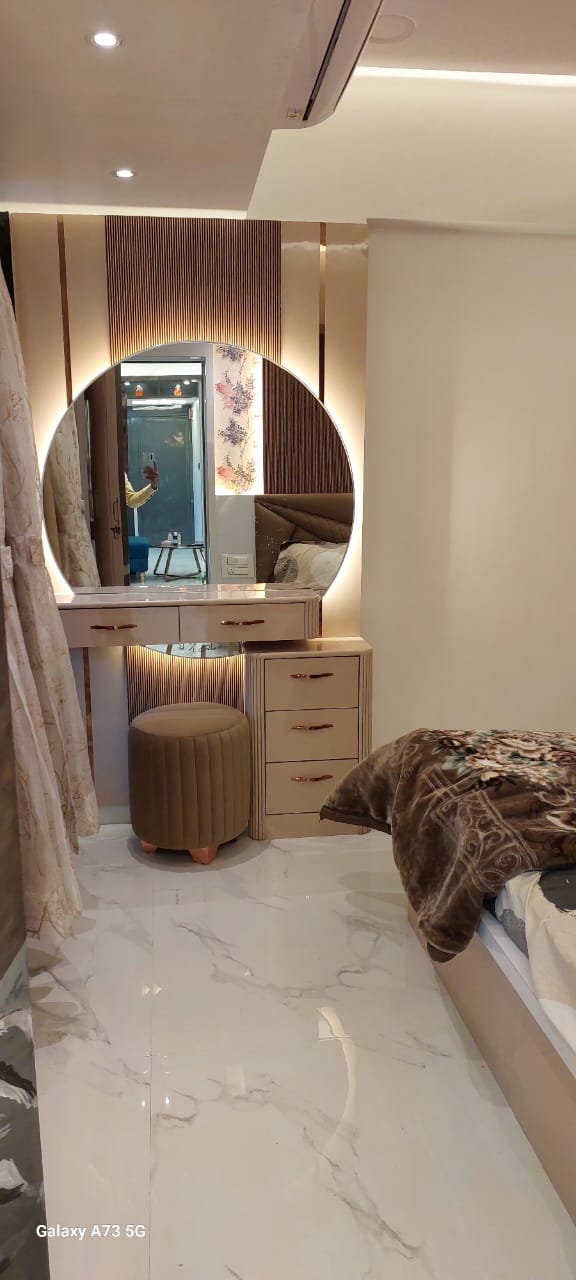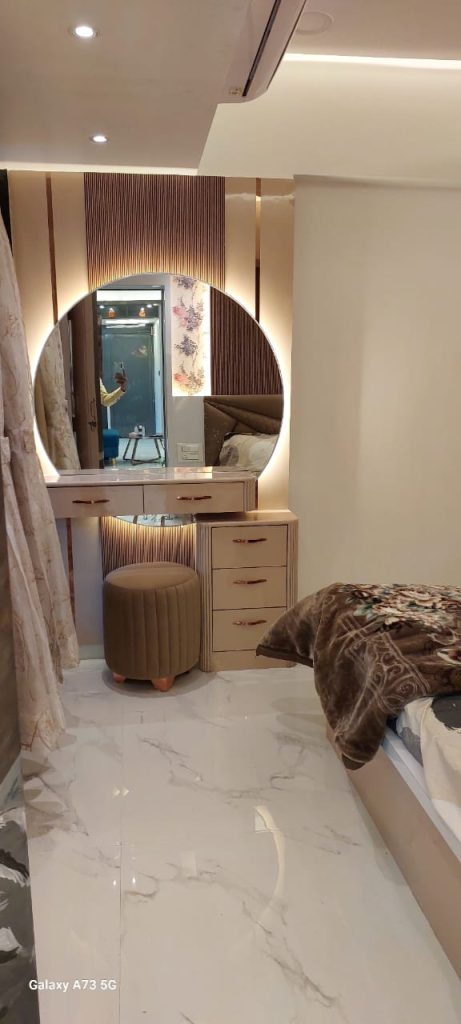bedroom interior

In the bedroom, there is a king-size bed measuring 6′.25 by 6′.5″ with a mattress that is 6″ by the bed head board. The wall panel rafter has been painted in dark and light hues, and Asian royal paints have been applied. Additionally, there is an open self-sport light in the corner with a wardrobe sliding door system and a sliding door on the left side of the bathroom. The ceiling is made of gypsum board and has a base light that is 15 W. The profile light design and the coop lighting with a L safe sport light are completed.



